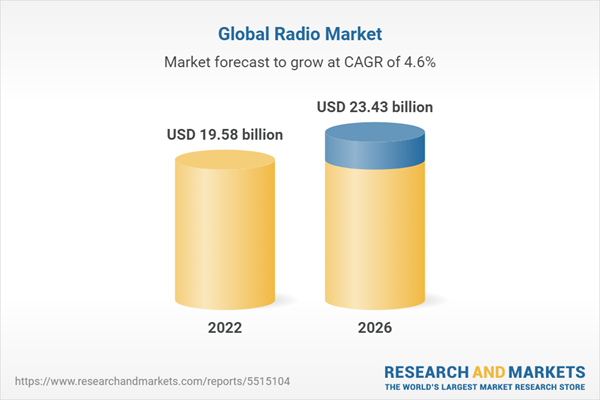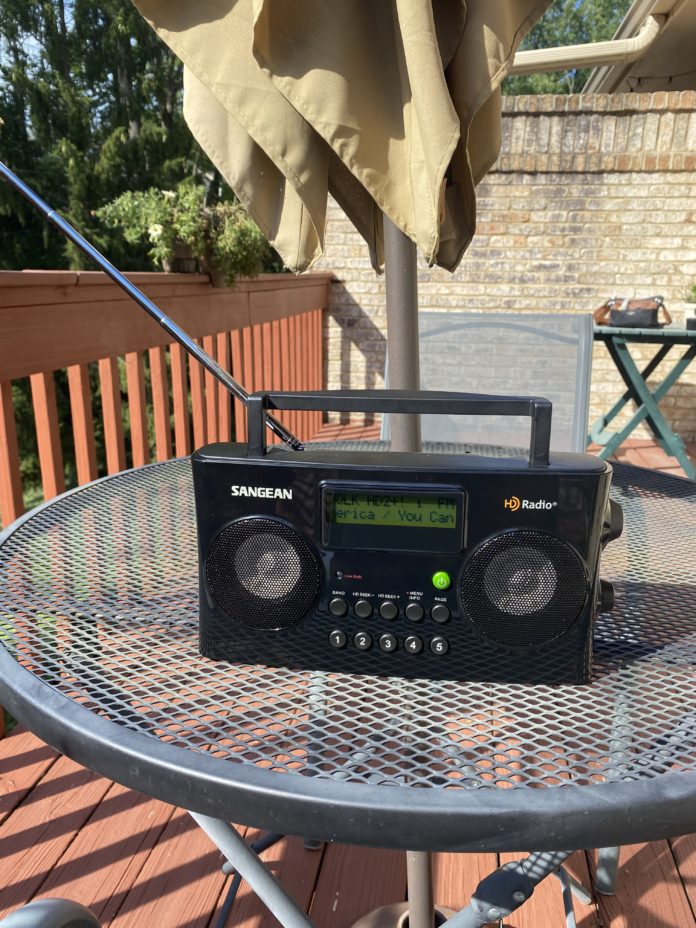How many radio industry executives consider Sirius XM to be not only a competitor for ears and ad dollars, but a peer, doing the same thing that their AM and FM stations do?
Few, if any, in the radio business would lump Sirius XM alongside the likes of iHeartMedia, Audacy Inc., and Cumulus Media. Yet, a newly released market research report that looks at “radio” on a global scale has.
The Radio Advertising Global Market Report 2022 from Ireland-based Research and Markets is now available, and its author seeks to provide strategists, marketers and senior management “with the critical information they need to assess the global radio advertising market as it emerges from the COVID-19 shut down.”
But, is the report faulty for its methodology?
Among the companies mentioned in this report are:
- Sirius XM Radio
- iHeartMedia
- Audacy Inc. (shown under its former name, Entercom)
- Cumulus Media
- National Public Radio (now known as NPR)
- Strategic Media Inc.
- The Radio Agency
- Jacob Tyler
- Sid Lee
- Citizen Group
- Gumas
- Division of Labor
- Kiosk
- Neff
The inclusion of Sirius XM is curious, as it is a subscription-based service largely comprised of advertising-free audio choices. Additionally, placing NPR in this study is misleading, as it uses a model based on underwriting support, and is not sold in the same manner as commercial radio in the U.S.
Then, there is the “global” scope of this report, which measures stations in a variety of nations against those in the continental U.S. Market conditions vary from nation to nation. As such, a global look at the state of radio may only be effective when measuring specific countries against one another.
Countries included in this report are Australia, with a vibrant local radio scene; Brazil; China, which sees all media administered through the government; France; Germany; India; Indonesia; Japan; Russia; South Korea; and the rapidly consolidating United Kingdom, where DAB is now the most popular radio listening platform, accounting for 43% of all listening compared to 34.2% for MW and FM. According to data from Radio Joint Audience Research Limited (RAJAR) published in October 2021, digital listening in the U.K. has increased to 65.8% of all radio listening.
RBR+TVBR contacted the Dublin, Ireland-based research firm on Friday afternoon, local time, regarding the methodology for the report. According to Research and Markets, the specific analyst is based in India, where the business week has already concluded, and is associated with The Business Research Company.
Based on its choice of companies in this report, Research and Markets arrives at the following: The global radio market is expected to grow from $18.34 billion in 2021 to $19.58 billion in 2022 at a compound annual growth rate (CAGR) of 6.8%.
The market is expected to reach $23.43 billion in 2026 at a CAGR of 4.6%.

How does Research and Markets arrive at these numbers?
The radio advertising market as the firm sees it consists of the sales of advertising services and related goods by entities (organizations, sole traders and partnerships) that plan, develop, create and manage advertisement and promotional activities on the radio. Only goods and services traded between entities or sold to end consumers are included.
With that as its basis, Research and Markets finds, “Cost-effective routes of advertisement for big and small companies are expected to drive the demand for the radio advertising market. Although newer advertising platforms such as the internet and other digital media are gaining traction in the advertising market, radio still represents a powerful advertising medium due to its high cost-effectiveness.”
That’s a powerful takeaway, as is a snapshot of what ad budgets look like elsewhere in the world for radio.
For smaller markets, companies spend about $900 a week for a 30-second ad schedule and around $8,000 a week in bigger markets such as Sydney, NSW, one of Australia’s largest markets. “On average, companies pay around $20 to reach 1,000 listeners during peak times of the day and close to $10 or $15 during off-peak hours,” Research and Markets finds. “Therefore, the cost-effective routes of advertisement are predicted to fuel the demand for the radio advertising market.”
The report also provides data for understanding how the radio advertising market is being affected by the coronavirus and how it is likely to emerge and grow as the impact of the virus abates.
What are the other takeaways from the report, which is available for purchase?
Research and Markets takes note of iHeartMedia’s February 2019 acquisition of Radiojar Information Technology S.A. for an undisclosed amount. Specifically, it is iHeart-owned RCS that purchased Greece-based Radiojar.
Why? “With the acquisition of Radiojar Information Technology S.A, iHeartMedia plans to leverage Radiojar’s tools to coherently associate with the seamless elements of broadcast radio and transition these skillfully produced listening experiences into any audio platforms including music streaming and podcasts, delivering high-quality audio experiences more effectively and efficiently,” Research and Markets concludes.
With topline data that is intriguing, one must nevertheless consider the inclusion of NPR and Sirius XM with radio broadcasting companies — a move that could skew the results of Research and Markets.





